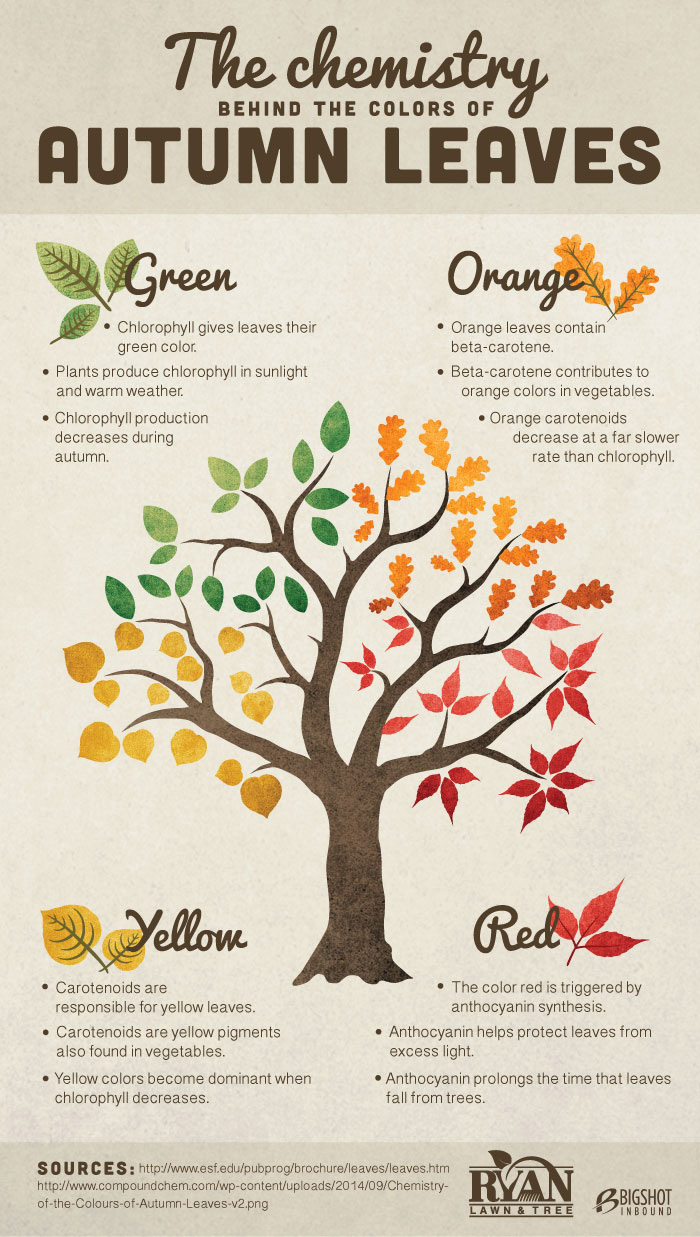What causes leaves to change their color in fall? Illustrated
- by
- Gene Caballero
- September 22, 2021
With fall around the corner, and the leaves about to change color we figured we would take a look at what gives leaves their color as they change. I think we have all saw the leaves laying in our yard and wondered what gives fall leaves their color before, and this infographic does a great job at telling us why.
Why are leaves green in the first place?
Most of us probably know that green leaves are caused by chlorophyll. Which is a chemical created by the tree's interaction with the sun. So leaves are greenest in warm weather. But as the fall approaches, and the hours of sunlight slowly diminish. Leaves begin to change their colors.
What causes fall leaves to be orange?
Much like the orange carrots in your fridge, orange fall leaves are caused by beta-carotene. Which diminishes much slower than chlorophyll as the tree's go to sleep for the winter. So after the chlorophyll goes away, we see the beta-carotene that is also present in the leaf.
What about yellow leaves?
Much like orange leaves, yellow leaves appear as the chlorophyll dissipates. The yellow coloration is caused by the presence of carotenoids in the leaves. So whether a leaf turns yellow or orange relies on which chemical is more present in the leaf itself.
And what causes red leaves?
Red leaves are caused by the trees reaction to protect them from sunlight. The red color is caused by anthocyanin synthesis. This chemical release allows the leaves to sit on the tree longer into the fall and early winter. Before they will eventually fall.
Your Green Pal's "What Causes Leaves to Change Their Color in Fall? Illustrated" infographic provides an enlightening explanation of the science behind autumn's colorful leaves. The green color of leaves is due to chlorophyll, which fades as daylight decreases in fall. Orange leaves owe their hue to beta-carotene, a pigment that diminishes more slowly than chlorophyll, becoming visible as green fades.
Yellow leaves reveal carotenoids, another pigment that becomes apparent when chlorophyll dissipates. The striking red color in some leaves results from anthocyanin synthesis, a reaction to protect leaves from sunlight, allowing them to stay on trees longer into the season. Understanding these natural processes enhances our appreciation of autumn's beauty, offering a glimpse into the fascinating world of plant biology.
Hopefully, this infographic will help you better understand what causes those beautiful fall colors. This infographic was created by Ryan Lawn & Tree.
Powered by Froala Editor











